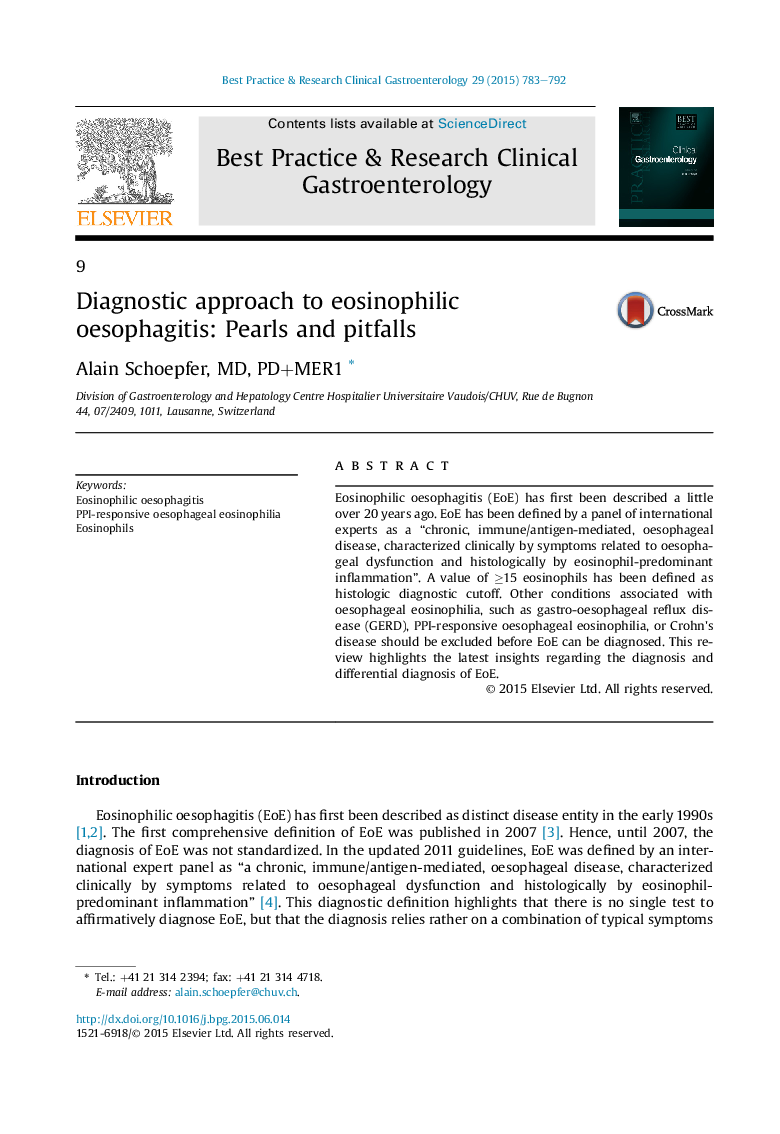| Article ID | Journal | Published Year | Pages | File Type |
|---|---|---|---|---|
| 3254057 | Best Practice & Research Clinical Gastroenterology | 2015 | 10 Pages |
Abstract
Eosinophilic oesophagitis (EoE) has first been described a little over 20 years ago. EoE has been defined by a panel of international experts as a “chronic, immune/antigen-mediated, oesophageal disease, characterized clinically by symptoms related to oesophageal dysfunction and histologically by eosinophil-predominant inflammation”. A value of ≥15 eosinophils has been defined as histologic diagnostic cutoff. Other conditions associated with oesophageal eosinophilia, such as gastro-oesophageal reflux disease (GERD), PPI-responsive oesophageal eosinophilia, or Crohn's disease should be excluded before EoE can be diagnosed. This review highlights the latest insights regarding the diagnosis and differential diagnosis of EoE.
Keywords
Related Topics
Health Sciences
Medicine and Dentistry
Endocrinology, Diabetes and Metabolism
Authors
Alain Schoepfer,
